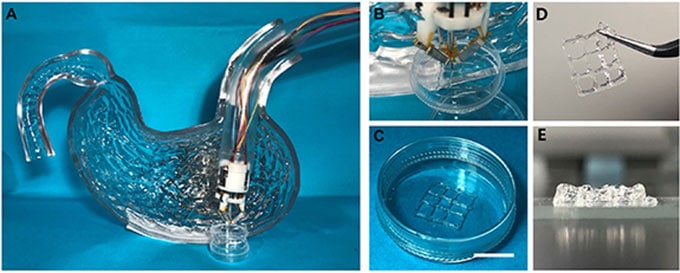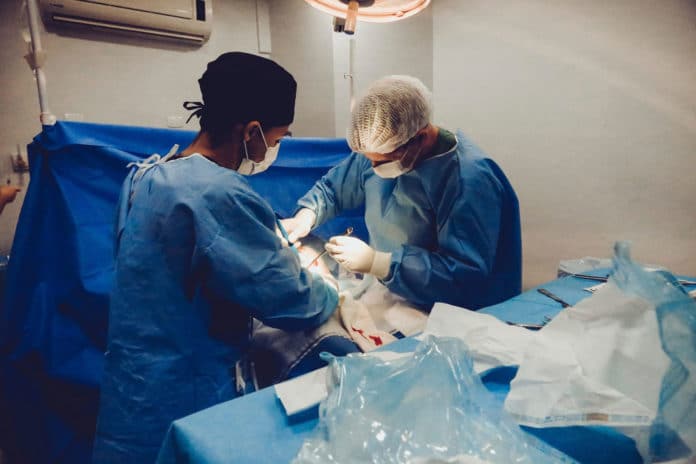3D bioprinters are already a reality in some countries that can even be used in regenerative medicine to transplant essential tissues and organs and help repair injuries. Unfortunately, this technology today is very difficult to implement with regard to some problems, such as the “bioprinters” are normally quite large, and cannot be applied to inner tissue repair without invasive surgery.
To overcome this, the research team of Tsinghua University in Beijing has developed a prototype microrobot that enters the body via an endoscope to carry out tissue repair inside the body. The microrobot relies on a new concept of “in vivo in situ bioprinting” to carry out tissue repairs within the body’s gastric organs.
According to Co-author Professor Tao Xu, from Tsinghua University, Gastric wall injury is a common problem in the digestive tract, and about 12% of the world’s population suffer from it to varying degrees. Bioprinting – delivering new cells directly to the wound site to repair the tissue – offers a potentially very useful way to treat the problem. So far, however, the technology can only be used to a limited extent.

The new bioprinting platform developed is a Delta robot composed of a fixed base, moving platform, and three identical kinematic chains. It has three end-connected parts, between which there is a tube for feeding the hydrogel. The printer has a print nozzle at the end of the delta mechanism. The hydrogel for printing consists of an aqueous solution of gelatin-alginate with human gastric epithelial cells and human gastric smooth muscle cells.
The microrobot can fold in on itself and take up much less space when it needs to enter the patient’s body. Once inside, it reopens the folded parts and begins the bioprinting operation. The working principle of the delta robot is that each of the three sections is driven by one simple motor at the base, but together they can move the end in any direction to print the tissue.
The researchers tested this robot in two ways. First, with a biological model of a human stomach and an endoscope, to mimic the insertion and printing operation elements of the process. Second, they carried out a bioprinting test in a cell culture dish to test the microrobot’s effectiveness in bioprinting viable cells and thereby repairing wounds.
The bioprint microrobots showed promising results in both tests. In particular, a 10-day cell culture showed that the printed cells remained at high viability and a steady proliferation. This is an indication of the efficient biological function of the cells in printed tissue scaffolds.
The first step of the study has verified the feasibility of this concept for treatment for gastric wall injuries. Now, the researchers want to reduce the microrobot’s printing platform even more in size and develop more effective bio-inks. These will be further important milestones to bring the technology to full realization.
In the future, it could potentially be used for a variety of wound treatments inside the body without the need for major surgery.
Journal Reference:
- Preliminary engineering for in situ in vivo bioprinting: a novel micro bioprinting platform for in situ in vivo bioprinting at a gastric wound site. DOI: 10.1088/1758-5090/aba4ff
